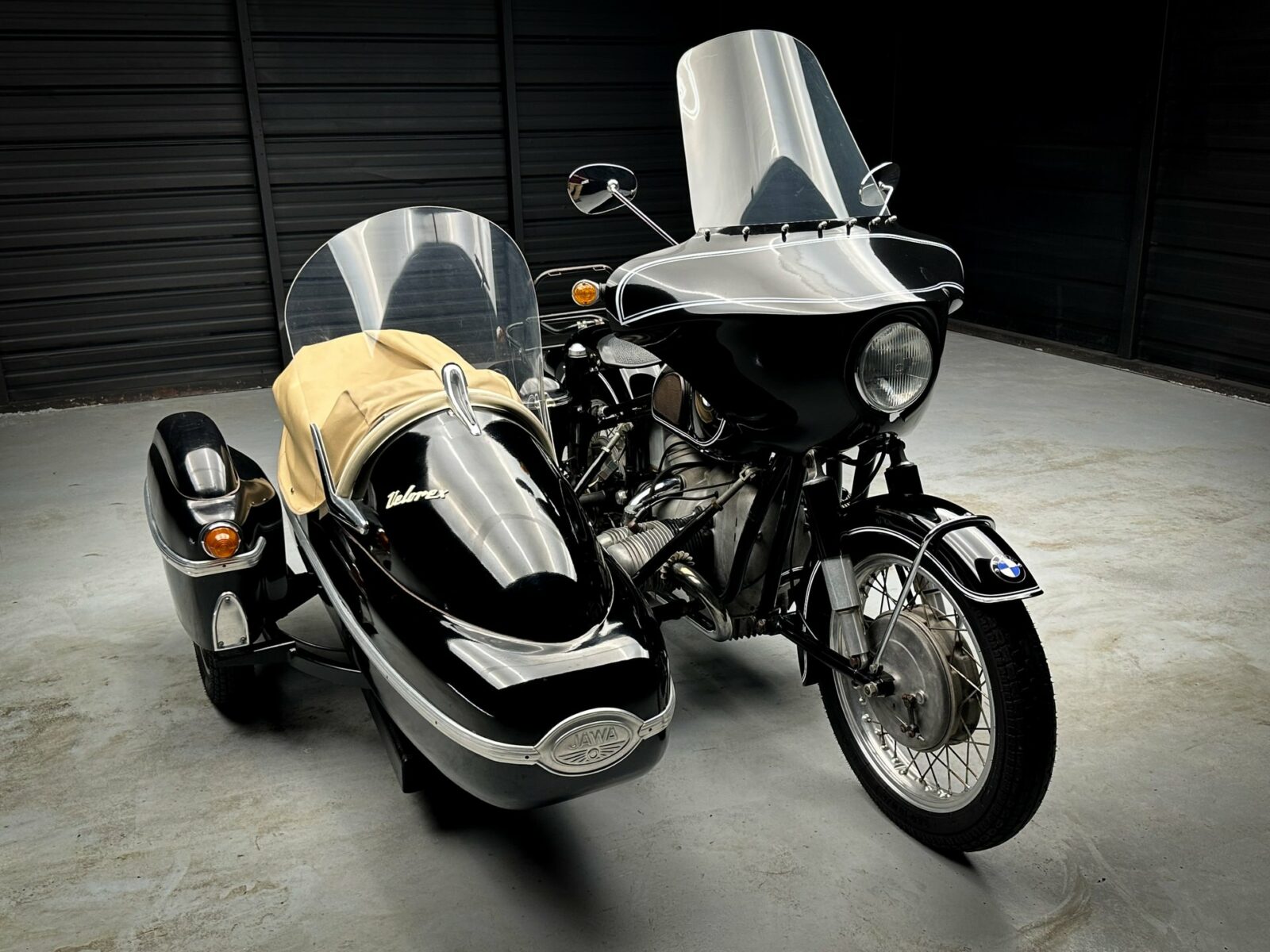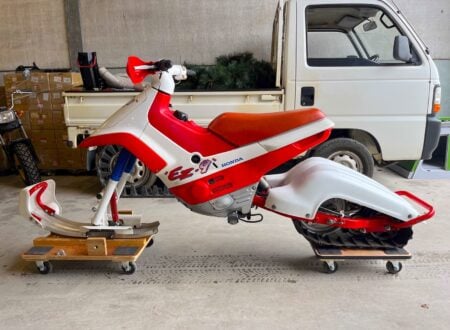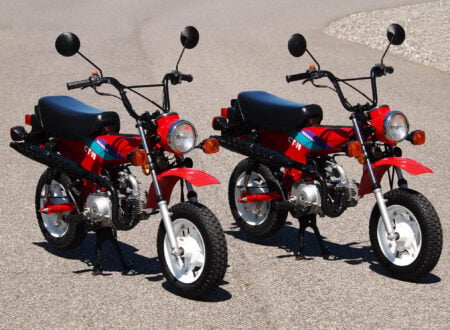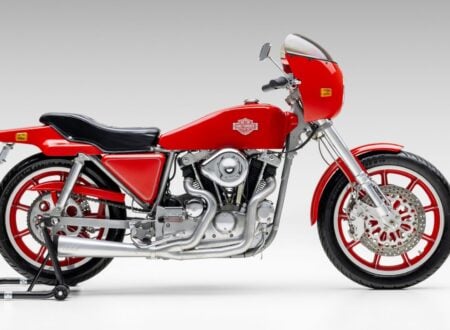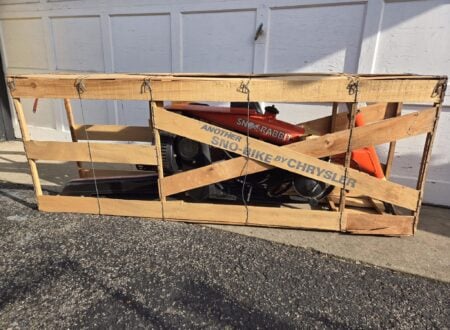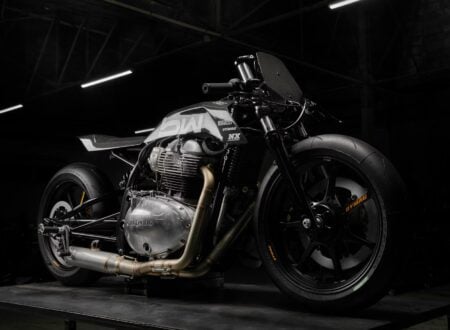This is a 1960 BMW R69, one of the most collectible post-WWII models made by the Munich-based company. It’s been paired with a period-correct Jawa Velorex sidecar in matching black, and the bike is said to have benefited from a full engine and carburetor rebuild.
The R69 was powered by BMW’s then-new M268 engine, a 35 bhp opposed twin that could push the bike up to a genuine 100 mph top speed – a heady figure for the time that went a long way to addressing BMW’s “reliable but boring” reputation.
Fast Facts – The BMW R69
- The BMW R69 is a member of the R69 family that was sold by the German motorcycle manufacturer in three generations between 1955 and 1969. All R69 motorcycles had a very similar 594cc horizontally opposed boxer twin engine, a 4-speed gearbox, a tubular steel duplex cradle frame, and drum brakes front and rear.
- The BMW R69 was produced from 1955 until 1969 as a more sports oriented motorcycle. It was good for 35 bhp at 7,000 rpm and had a claimed top speed of 100+ mph (160 km/h).
- Though the 600cc size would be considered middleweight today it was generally considered a larger capacity motorcycle at the time of its release in 1955, most of the high-performance OHV British twins had a displacement of between 500cc and 650cc at the time.
- The BMW R69 was fitted with drum brakes front and rear, Earles fork front suspension and a swing arm in the rear with two hydraulic shock absorbers. When fully fueled the bike weighed in at 202 kilograms and it carried 17 liters of fuel.
Making BMW Cool Again
In the years before WWII, BMW was one of the most highly-respected motorcycle manufacturers in the world. Their motorcycles were seen as bulletproof from a reliability standpoint, with good performance by the standards of the time, and excellent fit and finish.


After the war the German motorcycle (and automobile) manufacturer had fallen behind. The Brits were off to the races with their all-conquering singles and parallel twins, not to mention their mighty Vincent V-twins, while BMW occupied itself selling motorcycles largely based on pre-WWII designs.
This all changed in 1951 at the IFMA Motorcycle Show in Frankfurt when BMW unveiled a new 594cc engine named the M268. This would be the air-cooled, horizontally-opposed twin-cylinder engine that would power BMW into the 1950s. As it happened it powered them through almost all of the 1960s to boot.
The first production motorcycle powered by the new M268 engine would be the BMW R68 which BMW marketed as “The first 100 mph motorcycle.” Of course, it wasn’t the first production motorcycle capable of 100 mph, but as they say in PR, you should never let the truth get in the way of a good tagline.
The M268 had a higher-compression ratio than other BMW engines of the time, and many other non-BMW engines, it also had a racing-type magneto, large-bore 26 mm Bing carburetors, and better performing twin leading-shoe front brakes.
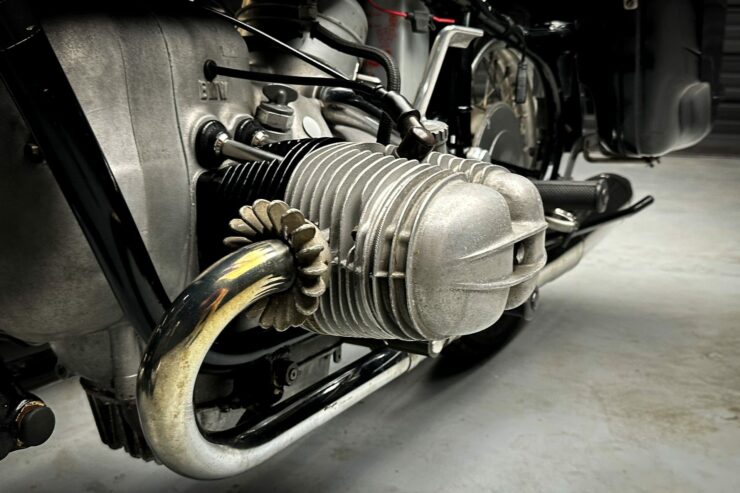

The vast majority were built in road-going form, however there was an interesting off-road variant developed to compete in scrambles and enduro type events like the International Six Days Trial (ISDT). Interestingly it would be this bike, the BMW R68 ISDT Special, that would become the forefather of the iconic BMW R80G/S and the entire adventure motorcycle genre.
In 1955 the R68 would be succeeded by the even more sporty BMW R69.
The BMW R69
The BMW R69 was unveiled in 1955 as an upgraded version of the earlier R68. It produced slightly more power and it instantly became the German motorcycle manufacturer’s new halo model.
It was powered by an improved version of the M268 engine, and the R69 family would enjoy a remarkably long production life – running from 1955 until 1969. Power was sent to the rear wheel via 4-speed transmission and a shaft drive that was essentially maintenance free.


The first model in the series, the BMW R69 was built from 1955 to 1960, it was then succeeded by the new and slightly more powerful BMW R69S, which itself was then replaced with the BMW R69US – a version that had been modified to appeal more to buyers in the United States.
The early versions of the model family, including the original R69 were fitted with Earles fork front suspension, ideal for sidecar use, and plunger-type rear suspension with dual shock absorbers. Drum brakes were fitted front and back, with the same large twin leading-shoe front brake as the earlier R68.
The rider sat atop a single sprung saddle, an additional seat could be added to the rear if required, and both the R69 and R69S models had lugs for fitting a sidecar if desired. Sidecars were far more popular at the time as they allowed three or more people to be transported on a single motorcycle, which was invaluable in the time of post-WWII rationing and austerity.
Over the course of the 1955 to 1969 production run BMW would sell over 15,000 examples of the model, though the earlier R69 remains the most rare with just 2,819 made. Today they’re highly collectible, and make excellent vintage sidecar haulers.


The 1960 BMW R69 + Jawa Velorex Side Car Shown Here
The combination you see here consists of a 1960 BMW R69 and a period-correct Jawa Velorex side car. Both are finished in matching back paintwork, with chrome brightwork ample windscreens, and the motorcycle has a large wind fairing.
The listing notes that service records since 2017 totaling more than $12,600 USD accompany the motorcycle, that’s a solid amount of money spend and it included rebuilding the engine and carburetors, re-sealing the transmission, refreshing the sidecar, and more.
There are currently 53,600 miles showing on the odometer and it’s being offered for sale out of Eldersburg, Maryland. If you’d like to read more about it or register to bid you can visit the listing on Marqued here.
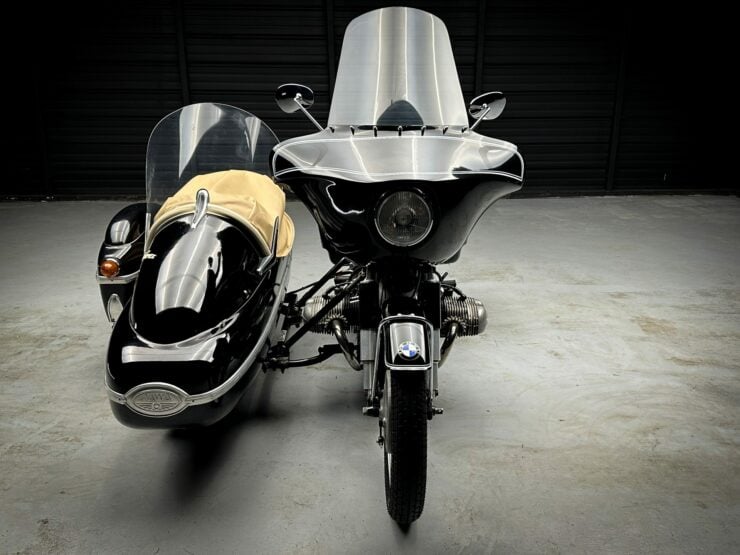
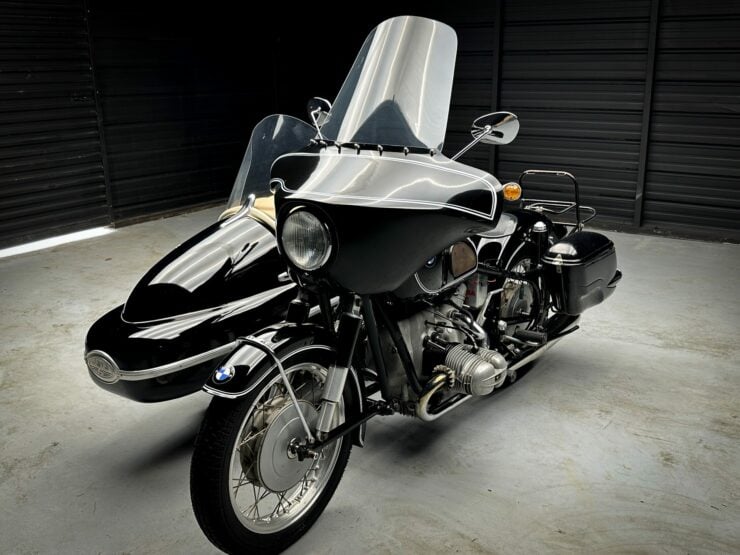

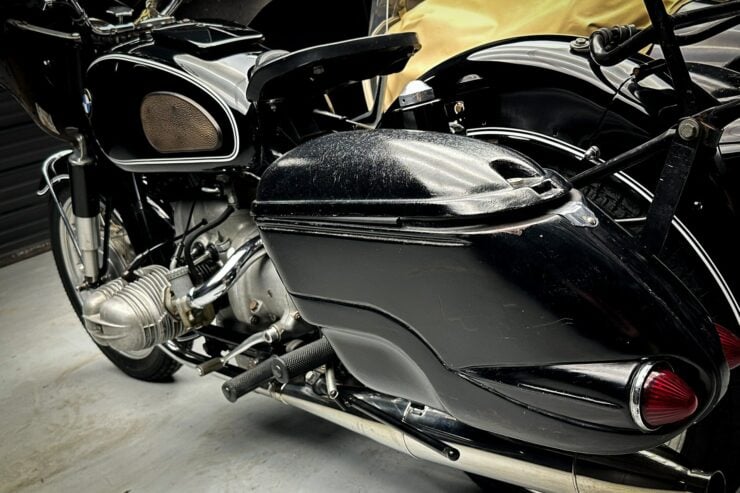
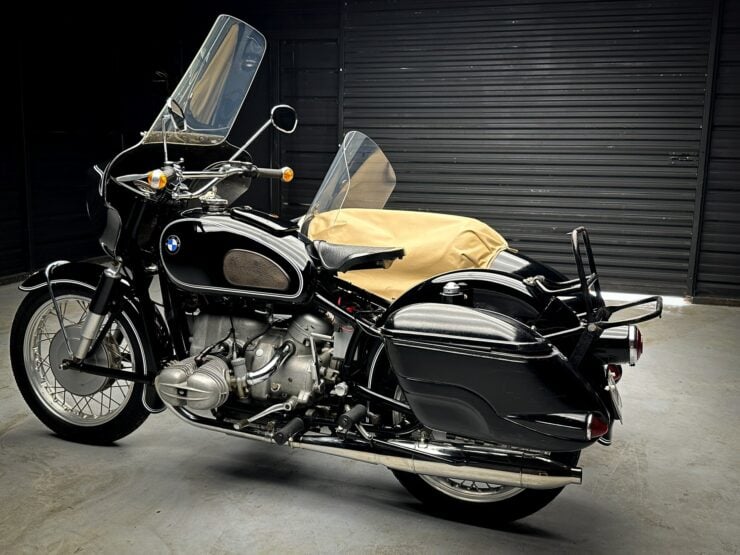
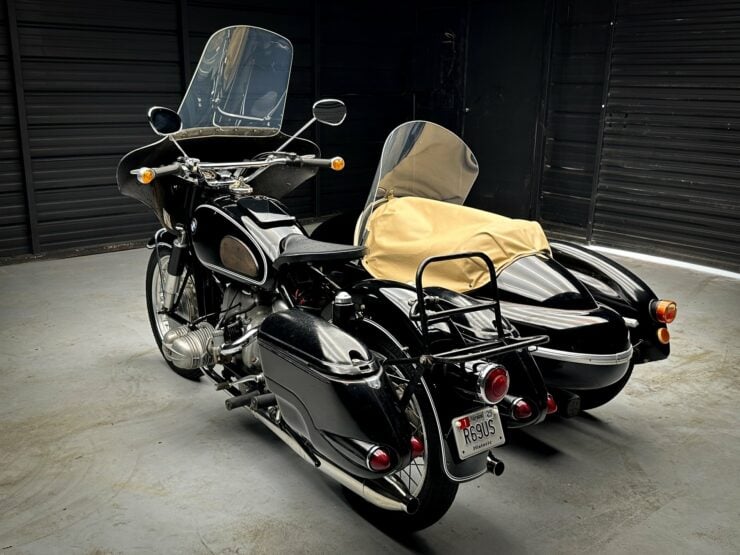
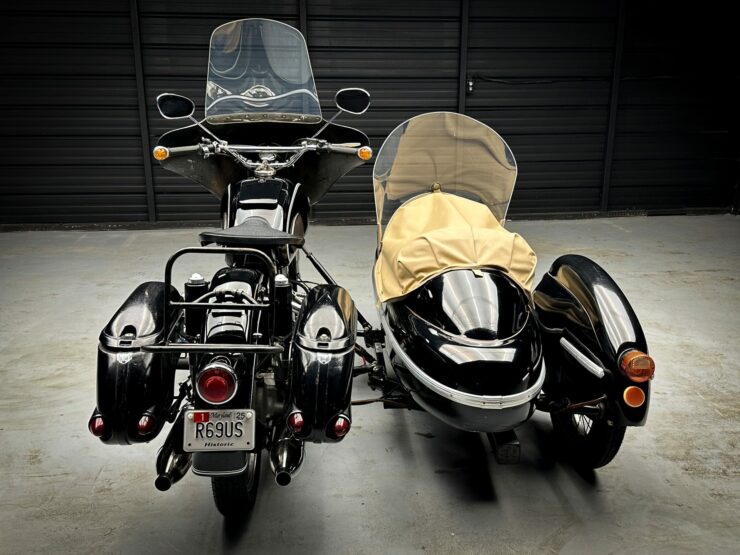

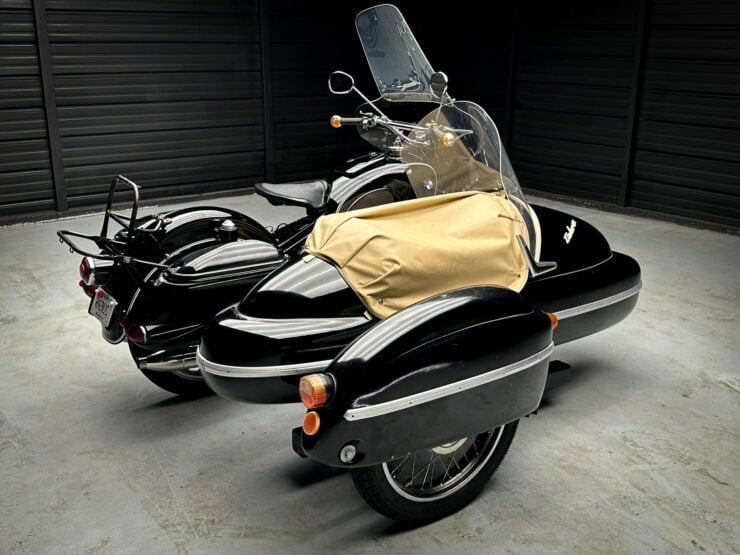
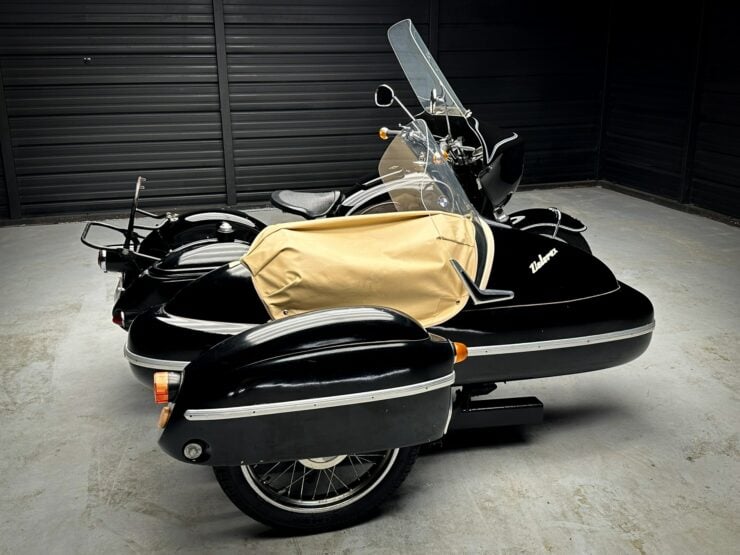
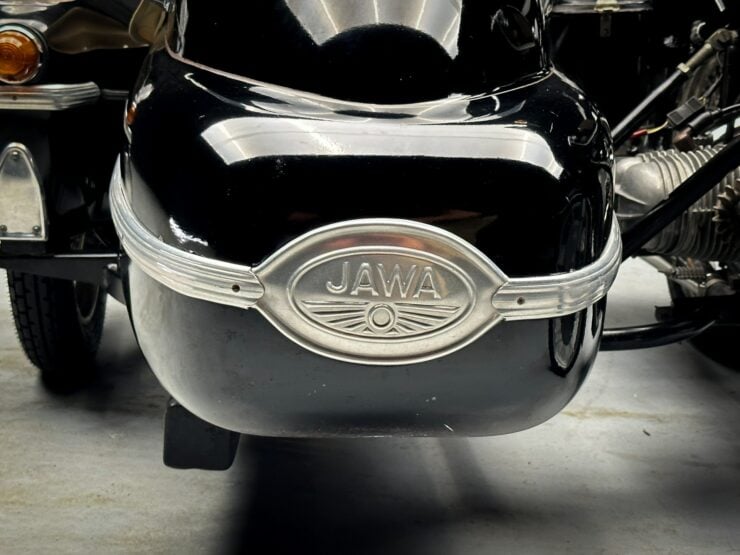
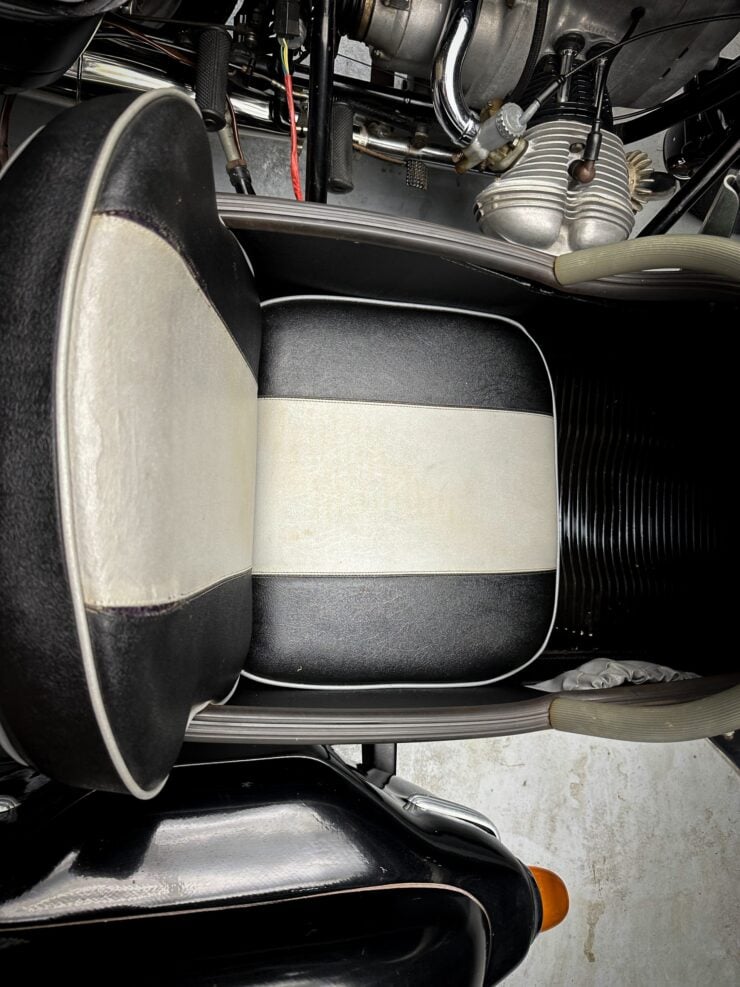
Images courtesy of Marqued.

